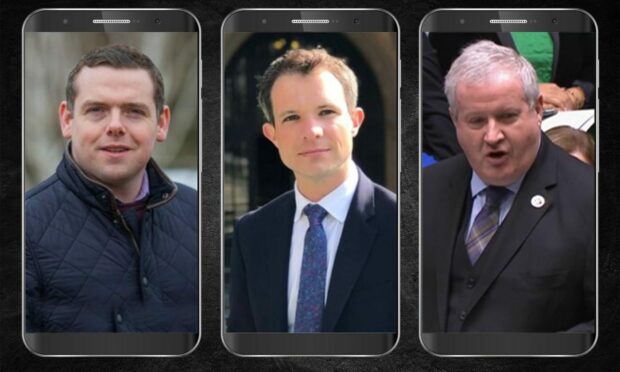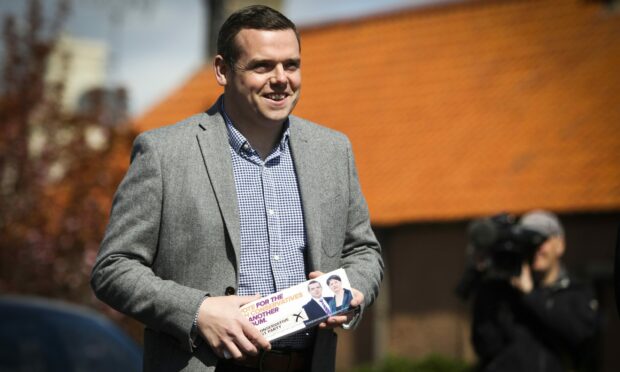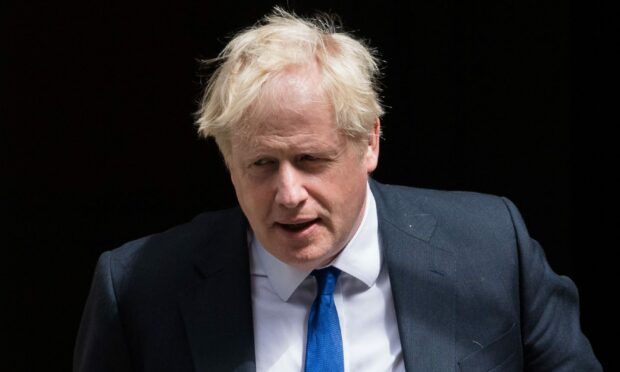Scottish Tory leader Douglas Ross receives more “toxic” insults on Twitter than any other MP north of the border, new data has shown.
In a huge project, the BBC checked 2.9 million messages sent over six weeks to Westminster MPs through the social media site to uncover the scale of abuse.
The findings were condemned by MPs who raised major concerns over how they are treated online.
Moray MP tops the list
The BBC’s shared data unit said a message, or tweet, qualified as toxic if it could be deemed “rude, disrespectful or unreasonable”, using a machine-learning tool.
In Scotland, research found 1,548 toxic tweets were sent to Moray MP Mr Ross from March 15 to April 23 this year.
That represented 3.8% of all posts directed to the Tory boss during this time period.
Aberdeenshire Tory MP Andrew Bowie was subjected to 867 toxic tweets, more than 5% of all posts sent to him.
SNP Westminster chief Ian Blackford was another main target in the region, receiving 578 hostile replies.
The data also found at least one in every 25 tweets sent to SNP MPs Kirsty Blackman and Stephen Flynn – along with Lib Dem Alistair Carmichael – were toxic in nature.
What’s caused this level of abuse?
MPs in the north and north-east insist social media platforms such as Twitter have made the problem worse.
For Mr Bowie, who was a regular target, toxic behaviour online has become normalised.
He told the Press and Journal: “It’s made it seem acceptable to use language that prior to social media would have been seen as unacceptable.
“People are able to hide behind a mask of anonymity and say things they would never have said prior to the advent of Twitter.”
Mr Carmichael, who represents Orkney and Shetland, said: “Social media tends to operate as an echo chamber.
“When people come up against somebody who has a different worldview, their reaction is visceral.
“Discourse has become much angrier. People have lost the knack of disagreeing well.”
Has the independence debate made it worse?
Scotland’s constitutional debate has sparked heated exchanges – but would abuse be just as widespread even if it wasn’t a factor?
Mr Carmichael said: “This is not a problem that is confined to any one country. This is deep-seated and almost cultural now.”
He added: “I don’t think the political discourse in Scotland would not have been coarsened if we hadn’t had a referendum.
“I think that the referendum did accelerate the process.”
Mr Bowie said: “It seems to be the case that the vitriol is worse than some of the abuse received by my colleagues south of the border.”
The BBC Data showed that the level of abuse sent to Tory MPs in Scotland was above the UK average, but below three English regions.
Who else was targeted?
Boris Johnson was the prime target for vitriolic tweets when the data was compiled, at a time when he was fined for breaking lockdown rules.
Tory backbencher Ben Bradley endured a higher percentage of toxic messages than any other MP at 13.5% of all posts sent to him.
More than one in every 10 posts directed to Lanarkshire SNP MP Steven Bonnar were deemed toxic, a greater total than anyone else in Scotland.
Are women more likely to be targeted?
A breakdown of the statistics by gender revealed men in Scotland were 0.12% more likely to be on the receiving end of an abusive message than women.
However, the findings also showed female MPs were more commonly called “idiots”, referred to as “stupid” and subjected to sexual language.
Mr Bowie said: “Some of the abuse directed at female MPs is much worse.”
Highland SNP MSP Emma Roddick previously said she had been subjected to extreme abuse online when still a councillor.
Aberdeen MP Kirsty Blackman has also spoken out against “vile” attacks on Twitter.
Can our online culture be improved?
Scottish MPs insist elected representatives can lead the way on trying to improve discourse, but warn vitriol should never be excused.
Mr Carmichael said: “We all have a responsibility to conduct ourselves to high standards.
“What I think you have to be careful about though is taking yourself to a position where abuse can be justified.
“The abuse and threats of violence are not acceptable. End of.”
Mr Bowie said: “We have to lead by example in terms of our language, our tone, and how we discuss politics.”




Conversation